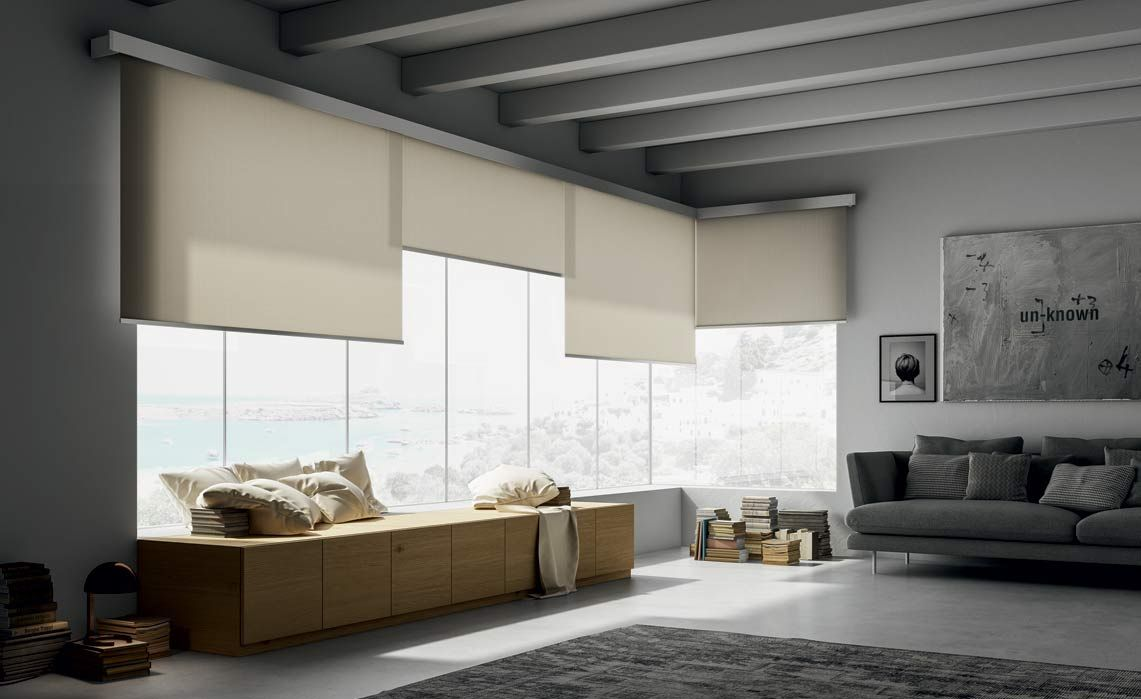Navigation
- Roller Shades
- Blinds
- Pros and Cons of Roller Shades and Blinds
- Comparison between Roller Shades and Blinds
- Factors to Consider When Choosing between Roller Shades and Blinds
- Conclusion
Window treatments serve as both functional and aesthetic components of home decor. They not only allow control over natural light but also enable privacy at the same time while adding a decorative touch. With so many options out there, selecting the right kind of window treatment can be challenging. This article aims to clarify the distinctions between roller shades and blinds and assist you in choosing the right one for your home.
Roller Shades
Roller Shades is a versatile yet straightforward window treatment option, consisting of a continuous sheet of woven or synthetic fiber material that is easy to operate. These shades are common in modern spaces, providing minimalism, and clean esthetics. There are three types of roller shades to choose from: blackout, solar, and sheer, each having its advantages and disadvantages.
Blackout roller shades are high-end, opaque shades designed to prevent light from penetrating, making them perfect for bedrooms and media rooms. They offer privacy and block heat gain or loss in the room.
Solar roller shades are semi-opaque shades designed to protect your furniture and flooring from harmful UV rays, maintain a view of the outdoors, and still offer privacy during the daytime. They are the perfect combination of function and design.
Sheer roller shades can soften the sunlight shining into a room while still providing an outside view by diffusing the light entering the room. They are a great addition to study rooms or dens.
Blinds
Blinds, on the other hand, comprise small slats of various materials, including wood, PVC, metal, and faux wood. These slats have an adjustable tilting feature, regulating the amount of light that enters a space while offering privacy. They can either be vertical or horizontal depending on personal preferences and the size and shape of the window.
Vertical blinds fit well for rooms such as hallways, patio doors or sliding glass doors, and large windows, while horizontal slats are best suited to smaller to medium-sized window frames.

Pros and Cons of Roller Shades and Blinds
When choosing between roller shades and blinds, it is essential to consider their pros and cons to make an informed decision.
Roller Shades Pros:
- Minimalist design, providing a clean and modern look
- Ease of operation
- Available in a wide range of styles, colors, and materials
- Reduced heat gain and loss
- Providing a complete blackout option
Roller Shades Cons:
- Prone to mildew if not correctly maintained
- No tilting feature for controlling natural light
- Susceptible to wear and tear, leading to warping or fraying
Blinds Pros:
- Offers varying degrees of natural light for a customizable atmosphere
- Suitable for smaller or uniquely shaped windows
- Available in multiple slat sizes, materials, and colors
- Suitable for rooms with high moisture levels, such as bathrooms and kitchens
- Ease of customizations
Blinds Cons:
- Heavy dust accumulators requiring regular cleaning
- Difficult operation
- Susceptible to entangling cords
- Higher energy losses
Comparison between Roller Shades and Blinds
Both roller shades and blinds provide window coverage with additional benefits, but there are unique features influencing their differences.
- Roller shades are safer and easy to operate compared to blinds
- Blinds have an adjustable tilting feature that roller shades do not possess
- Roller shades offer increased insulation and complete light blocking options, unlike blinds
- Roller shades' minimal designs allow them to suit different styles, while blinds' slatted designs make them ideal for more traditional aesthetics.
- Roller shades are better at reducing high noise levels than blinds
- Blinds' tilting feature offers more privacy and light control than roller shades.
Factors to Consider When Choosing between Roller Shades and Blinds
Several criteria must be considered when choosing either roller shades or blinds for your home:
- Purpose of the Room: The room's primary function is essential in choosing what to use. For instance, use blackout shades for the bedroom and solar shades for the sunroom.
- Window Size and Shape: Smaller windows may require blinds, while larger windows require roller shades or vertical blinds.
- Privacy: The amount of privacy needed in a room dictates the decision to use shades or blinds.
- Energy Efficiency: Consider the insulation properties that suit your region's temperature requirements, unlike blinds that permit too much heat loss or gain.
- Style and Aesthetics: The window treatment choice should blend with the house's entire decor scheme and suit personal style preferences.

Conclusion
Window treatments are a key component of delivering both form and function to interior design. Blinds and roller shades are the perfect solutions with their different functional advantages. Roller shades are minimalistic in design, featuring functionality and style with easy operation, while blinds offer flexible natural light control. Make a well-informed decision by considering their pros, cons, and individual features in line with your style, location, and environmental constraints.

